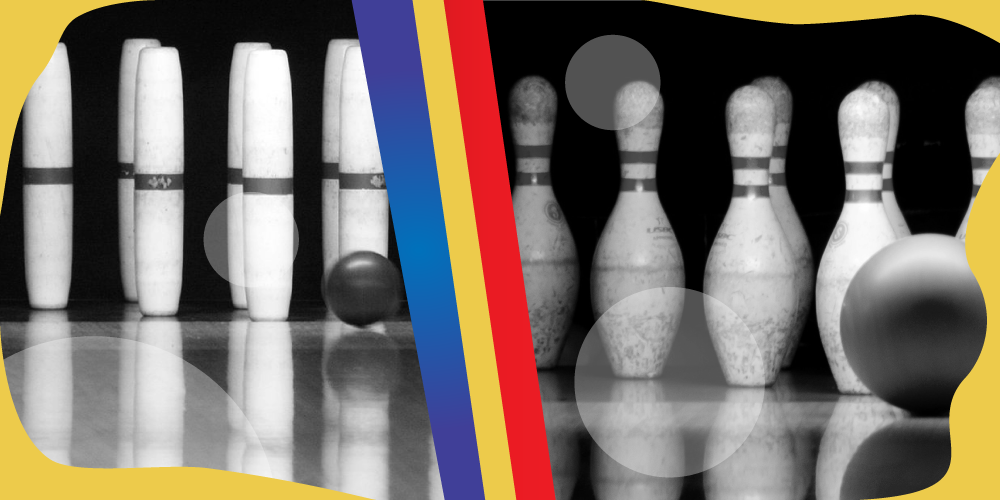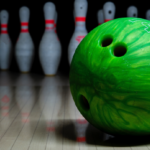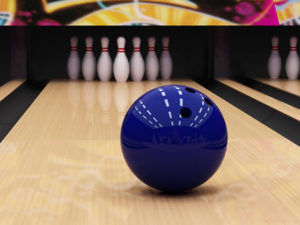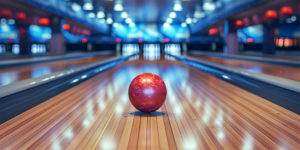
Bowling is one of America’s favorite pastimes and has been entertaining young and old, experienced and inexperienced, for decades. While bowling popularity has maintained throughout many different places in many different eras, it has definitely changed and evolved over time to embrace technology and also bring about new and fun aspects to the classic game.
One major branch-off from ten-pin bowling is the popular form of bowling called “candlepin bowling.” When choosing a bowling alley to visit, be sure to check to see which type of bowling the venue offers, as these two individual ways to bowl are vastly different. Many people enjoy both ways of bowling, often one way more than the other, due to preference.
Let’s explore the differences between these two popular games, ten-pin bowling and candlepin bowling.
Ten-Pin & Candlepin: What’s the Difference?
Most people are familiar with “ten-pin” bowling. While one type of bowling is referred to as “ten-pin bowling,” really both candlepin bowling and ten-pin bowling both actually use ten pins. This is one of their primary similarities. Almost every other aspect of the game differs between the two.
Ten-Pin Bowling
Ten-pin bowling in America was once played with only nine pins, and was called, very appropriately, nine-pin. However, when its association with gambling and drinking led it to be banned in the 1840’s, players added an additional pin to the game, therefore creating “ten-pin bowling.” This technicality gave them a loophole to continue to bowl legally, and the altered gameplay remained in effect, establishing how we still bowl today.
The pins used in ten-pin bowling are set up in a triangle formation, with one pin in the front row, two in the next, three in the one after, and four in the last. The pins used in ten-pin bowling have a distinct rounded shape on the majority of the pin, a thin neck, and then widen slightly to form the rounded top of the pin. Pins used in ten-pin bowling are often white with two horizontal red stripes around the pin’s neck.
The bowling ball used in ten-pin bowling is a heavy (usually 6-16 lb) ball roughly 8.5″ in diameter. These balls have three finger holes drilled into them; one for the thumb, one for the middle finger, and one for the ring finger.
Candlepin Bowling
Candlepin bowling, on the other hand, is played with a much smaller hand-held ball that does not have any finger holes. Candlepin bowling balls weigh anywhere from 2 lbs and 4 oz to 2 lbs and 7 oz, and have a diameter of about 4.5.” This means that candlepin bowling balls are about half the size of a ten-pin bowling ball, and weigh less than half as much. These factors alone make candlepin bowling a good option for people with arthritis or who have issues lifting heavier weights or bigger objects.
The pins used in candlepin bowling are basically straight, thin cylinders. There is a slight narrowing on the very top and bottom of the pin, giving the ends a slightly smaller diameter than the center, but in general they are straight cylinder-like pins that are slightly taller than a ten-pin bowling pin.
In candlepin bowling, not only is the ball smaller and the pins thinner, but there are some key differences in the rules from ten-pin bowling as well. The biggest game difference is perhaps the fact that you can bowl three times in one frame, vs. only twice in ten-pin bowling. This allows you more chances to try to get a spare if you don’t bowl a strike on the first roll.
In candlepin bowling you also get another advantage when it comes to the pins; after bowling, the pins that are knocked down can be left right there in the lane while you bowl again. This means you can aim for a downed pin, or “deadwood,” and use that to help you knock down those that are still standing, which is not an option in ten-pin bowling.
Another big difference between ten-pin bowling and candlepin bowling is in the way you go about deciding when to bowl your ball. In ten pin bowling, you have to wait until your ball is rolled back up to you. In candlepin bowling, this is not the case. This means that you could potentially throw a second ball soon after the first, and it is possible to use this to your advantage. One way is to try to benefit from the pins that are left in the lane. If one of them is moving, you can take advantage of that and strike it when it’s in the best possible position. Not having to wait can make this possible.
There are a lot of different ways the two types of bowling differ, particularly in strategy. Your best bet is to try both and enjoy each for the great fun they provide. Please note that specific forms, throwing styles, and gameplay tricks that are specific to ten-pin bowling will not have the same effect when playing other forms of bowling such as candlepin bowling.
Which Type of Bowling is Right for You?
For the most part, choosing between ten-pin bowling and candlepin bowling comes down to personal preference. Some people might prefer candlepin bowling’s rules regarding “deadwood” pins or the fact that it allows for three throws per turn. Alternately, some might prefer the classic game of ten-pin bowling, feeling the weight of the heavy ball in their hand and hearing the clash of pins collapsing in a crisp strike. There is a certain skill and style that goes with each form of bowling, and these appeal to different people!
Come to SpareZ in Davie, FL!
For the best ten-pin bowling in Davie and surrounding areas, come to SpareZ! Click here to fill out our contact form, or call 954-434-9663 to find out more information about our bowling options, joining a league, how to book events, and more! Enjoy yourself to the fullest and accelerate your game play at your best local bowling alley, SpareZ!






